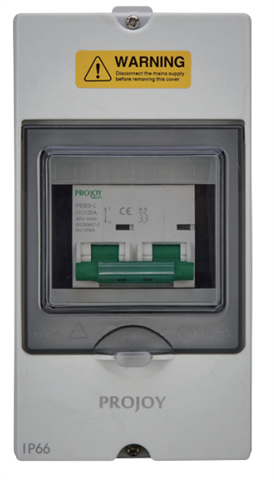Regulation 421.1.201 says that within domestic (household) premises, consumer units and similar switchgear assemblies shall comply with BS EN 61439-3 and shall be manufactured or enclosed in a non-combustible material.
Many installers are using plastic enclosures however to house a double pole MCB which acts as a means of isolation as well as overload and short circuit protection. This seems wrong, especially when dealing with a DC source with high energy withstand requirements. They are using this in escape routes within the house. It doesn't help that many batteries come with an MCB hidden under a plastic cover but I don't think that is within the scope of BS7671. Also many wholesalers are selling plastic enclosures alongside the MCB and many example installation pictures of inverters have a plastic enclosure for the MCB.
Does the MCB enclosure for a battery count as "consumer units and similar switchgear"?


